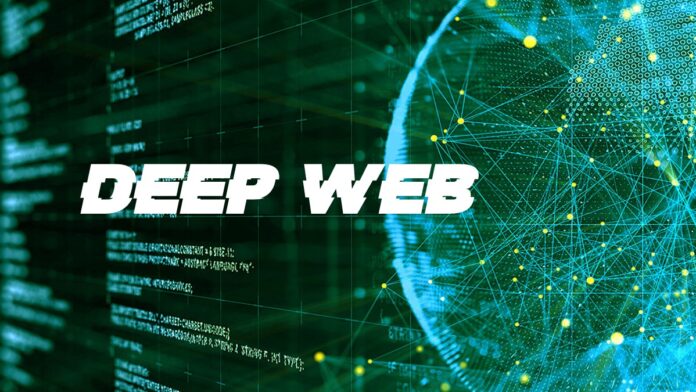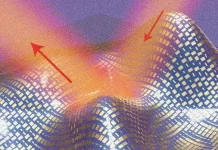The Dark Web is a tiny part of the Deep Web, while both make up the vast Deep Web. The Deep Web and the Dark Web are distinct in that they contain different types of material and various means to access it. While measuring the extent of the Deep Web is technically impossible, some estimates place it at 500 times the size of the Surface Web, while other researchers believe it is 5000 times greater. Regular search engines only index about 16 percent of the Surface Web and 0.03 percent of all internet information. Databases and directories can be used to reach the Deep Web and specialized search engines that deliver more accurate search results on specific topics. In this article, learn about what is the deep web.
Contents
What is the Deep Web?
The deep web, also known as the unseen or invisible part of the World Wide Web, is a section of the Internet that is not indexed by ordinary web search engines. The “surface web,” on the other hand, is open to everyone with an Internet connection. Email, online banking, medical records, restricted access to social media pages and profiles, some web forums that require registration to read the material, and available online services such as video on demand and some online publications and newspapers are examples of the deep web. Content concealed behind login forms and hidden under password-protected websites where only they can access them is where we enter into the Deep Web.
For example, If you’ve ever logged into your email account, you’ve browsed the Deep Web. Unfortunately, the Deep Web is not as cool as it sounds. It’s pretty much as ordinary as the surface web, but with just a bit more secrecy, it is the most massive part of the Internet, containing 96% of its information. However, the Deep Web, which is made up of areas of the web that are not indexed means not searchable by search engines, is frequently mistaken for the Dark web. To learn more about Dark Web, read this article: The Dark Web: Hidden Corner of The Internet.
Despite its reputation, the unindexed material on the Deep Web can typically be located in regular databases. For example, the Deep Web is home to PubMed, LexisNexis, and Web of Science. Users of these databases may be unaware that they interact with the Deep Web frequently. The Deep Web is responsible for 90% of all internet traffic. According to current academic studies, the Deep Web is critical in improving higher education results. Dynamically generated, data-intensive, and time-sensitive or short-lived pages are standard features of deep Web sites.
Because most libraries provide users with access to hundreds of different databases, it is in the best interests of the information professional to be familiar with the Deep Web and how to use its capabilities to find the correct information.
Rise of Deep Web
The first time the terms “deep web” and “dark web” were used interchangeably was in 2009 when deep web search language was discussed alongside criminal actions on the Freenet and darknet. Among the illegal behaviors are personal passwords, fake identification documents, drugs, guns, and obscene child literature.
The dark web is a portion of the deep web that has been intentionally hidden and is inaccessible through standard browsers and methods. While the deep web refers to any site that cannot be found using a traditional search engine, it is the portion of the deep web that has been intentionally hidden and inaccessible through standard browsers and methods. On the Deep Web, library and information specialists are trained to identify relevant content faster and more efficiently than casual information seekers.
Data of Deep Web
On the deep web, accurate data is complex, as evidenced by BrightPlanet’s study (Bergmann 2001). The deep web is 400 to 500 times the size of the surface web. There are most likely around 200,000 deep websites. Deep web pages receive 50% more monthly hits than surface websites and are better linked.
In 2003, the University of California, Berkeley issued the following values on the Internet’s scopes 167 terabytes of surface web and 91 850 terabytes on the deep web.
Types of Deep Web
The term “deep web” refers to websites or portions of websites that are not indexed by search engines. The following are examples of typical profound web kinds.
Communities
Communities that demand registration to access the material. For example, a members-only dating site.
Services
For a price, clients can access a database. For example- Credit reporting firms in some countries collect financial data on people and sell it as a service.
Private Networks
Virtual private networks (VPNs) are private networks that can be accessed via technology (VPN). These networks are secured so that only authorized people can access them. This comprises corporate, government, educational, and research networks that can be accessed over the Internet. Such private networks’ collective knowledge and data may be more extensive than the open web.
Dark Web
Websites created on top of the darknet aim to give users privacy. People who are worried about their privacy will be attracted to this. However, the dark web is also utilized for criminal activity, such as selling illicit goods, services, or activities. The dark web is only a tiny part of the deep web. Frequently, the two terms are mixed up with each other.
Paywall
A digital newspaper or a streaming video is content that demands payment. That’s why they use a paywall to secure their transactions.
Non-Standard Technology
The open web is built on available technology that search engines and browsers can understand. Unfortunately, this system is difficult to detect any unique technology.
For example, A large-scale peer-to-peer game environment may be accessible to everyone with the appropriate software, but it is invisible to web browsers.
Unlinked Content
Content that is freely available to the public but isn’t linked anywhere, making it invisible to search engines. For example, a family webpage circulated via email but does not contain any external links may go unnoticed.
Conclusion
Compared to the surface web, the deep web has much more data. Users may benefit from integrating these results since they may gain helpful information. However, efficiently implementing such a search engine for both the surface and deep web is complex, and selecting acceptable sources for a search query could be challenging. In addition, there are opaque sites on the deep web that provide scientific and legal data. Aside from a vast black market, numerous websites are dedicated to cybercriminals, political radicals, and other undesirables. As a result, despite the enormous amount of good papers and data, the deep web should be used with caution.
Sources
- Barker, Joe (January 2004). “Invisible Web: What it is, Why it exists, How to find it, and its inherent ambiguity.” The University of California, Berkeley, Teaching Library Internet Workshops. Archived from the original.
- King, John D.; Li, Yuefeng; Tao, Daniel; Nayak, Richi (November 2007). “Mining World Knowledge for Analysis of Search Engine Content” (PDF). Web Intelligence and Agent Systems. 5 (3): 233–53. Archived from the original (PDF).
- Devine, Jane; Egger-Sider, Francine (August 2021). “Beyond google: the invisible web in the academic library.” The Journal of Academic Librarianship. 30 (4): 265–269. doi:10.1016/j.acalib.2004.04.010.
- Hamilton, Nigel (2019–20). “The Mechanics of a Deep Net Metasearch Engine.” In Isaías, Pedro; Palma dos Reis, António (eds.). Proceedings of the IADIS International Conference on e-Society. pp. 1034–6. CiteSeerX 10.1.1.90.5847. ISBN 972-98947-0-1.
- Raghavan, Sriram; Garcia-Molina, Hector (September 11–14, 2001). “Crawling the Hidden Web.” 27th International Conference on Very Large Data Bases.
- “Surface Web.” Computer Hope.
- Wright, Alex (February 22, 2009). “Exploring a ‘Deep Web’ That Google Can’t Grasp.” The New York Times.
- Shedden, Sam (June 8, 2014). “How Do You Want Me to Do It? Does It Have to Look like an Accident? – an Assassin Selling a Hit on the Net; Revealed Inside the Deep Web”. Sunday Mail. Archived from the original.
- Beckett, Andy (November 26, 2009). “The dark side of the internet.”
- D. Day. Easiest Catch: Don’t Be Another Fish in the Dark Net. Wake Forest University: TEDx Talks. Archived from the original.
- U.F.E. (2022, March 3). The Dark Web: Hidden Corner of The Internet. Unrevealed Files.
- Solomon, Jane (May 6, 2015). “The Deep Web vs. The Dark Web.”
- NPR Staff (May 25, 2014). “Going Dark: The Internet Behind The Internet.”
- Greenberg, Andy (November 19, 2014). “Hacker Lexicon: What Is the Dark Web?”.
- “The Impact of the Dark Web on Internet Governance and Cyber Security” (PDF).
- Bergman, Michael K (August 2001). “The Deep Web: Surfacing Hidden Value.” The Journal of Electronic Publishing. 7 (1). doi:10.3998/3336451.0007.104.
- Garcia, Frank (January 1996). “Business and Marketing on the Internet.” Masthead. 15 (1). Archived from the original.
- @1 started with 5.7 terabytes of content, estimated to be 30 times the size of the nascent World Wide Web; AOL acquired P.L.S. in 1998, and @1 was abandoned. “P.L.S. introduces AT1, the first ‘second generation’ Internet search service” (Press release). Personal Library Software. December 1996. Archived from the original.
- “Hypertext Transfer Protocol (HTTP/1.1): Caching”. Internet Engineering Task Force. 2014.
- Wiener-Bronner, Danielle (June 10, 2015). “NASA is indexing the ‘Deep Web’ to show mankind what Google won’t.” Fusion.
- Wright, Alex (February 22, 2009). “Exploring a ‘Deep Web’ That Google Can’t Grasp.” The New York Times.
- “Intute F.A.Q., dead link”.
- “Elsevier to Retire Popular Science Search Engine.” library.bldrdoc.gov. December 2013. Archived from the original.
- Raghavan, Sriram; Garcia-Molina, Hector (2001). “Crawling the Hidden Web” (PDF). Proceedings of the 27th International Conference on Very Large Data Bases (VLDB). pp. 129–38.
- Alexandros, Ntoulas; Zerfos, Petros; Cho, Junghoo (2005). “Downloading Hidden Web Content” (PDF). UCLA Computer Science.
- Shestakov, Denis; Bhowmick, Sourav S.; Lim, Ee-Peng (2005). “DEQUE: Querying the Deep Web” (PDF). Data & Knowledge Engineering. 52 (3): 273–311. doi:10.1016/S0169-023X(04)00107-7.
- Barbosa, Luciano; Freire, Juliana (2007). “An Adaptive Crawler for Locating Hidden-Web Entry Points” (PDF). W.W.W. Conference 2007.
- Madhavan, Jayant; Ko, David; Kot, Łucja; Ganapathy, Vignesh; Rasmussen, Alex; Halevy, Alon (2008). “Google’s Deep-Web Crawl” (PDF). VLDB Endowment, A.C.M.
- Aaron, Swartz. “In Defense of Anonymity.”
- Howell O’Neill, Patrick (October 2013). “How to search the Deep Web.” The Daily Dot.
FACT CHECK: We strive for accuracy and fairness. But if you see something that doesn’t look right, please Contact us.
DISCLOSURE: This Article may contain affiliate links and Sponsored ads, to know more please read our Privacy Policy.
Stay Updated: Follow our WhatsApp Channel and Telegram Channel.












